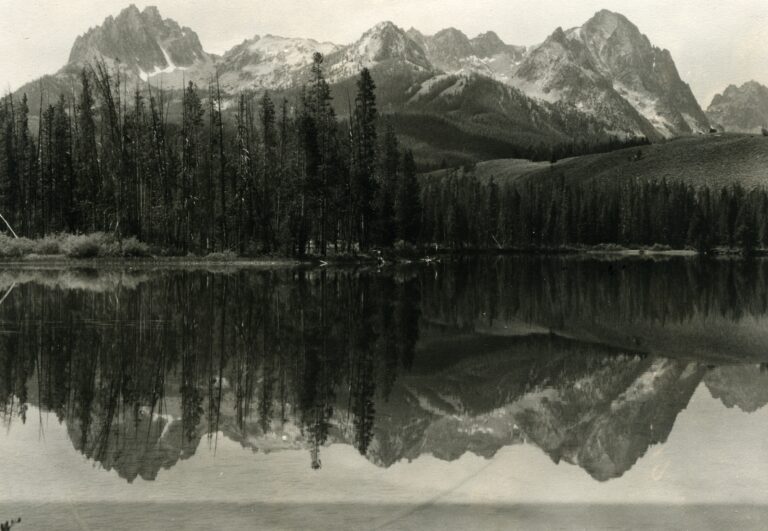There is something that we, at the museum, are prone to say to people traveling through the Sawtooth National Recreation Area (SNRA). As they are smiling through the tales of all of their adventures and asking about what there is to do here, we tell them that the Sawtooths are not lacking in experiences. Drive down a dirt road. Stand alone in the forest and listen to the silence. Look around you. Take from this area only what you can keep in your mind.
When I first dropped down into the Stanley Basin, it was as if I was seeing the world for the first time. I had been to beautiful places, I had lived in beautiful places, but the image of those jagged rocks stretching out of the ground has tattooed itself into my mind. Every time someone says that they love it here, I can only nod in agreement; how could a person not love it here? How could someone come over those mountains and not feel as if it has altered their life forever? The views are just one of the many pieces of the puzzle that puts into perspective why the valley is loved. And why so many people rallied to get it protected in 1972. The allure is nature, the natural magnificence of a seemingly untouchable place.

Mount Heyburn from Little Redfish, circa 1920. SIHA Collections, 2024
So how do people fit into this story?
Today I went for a walk in the woods, a fairly normal occurrence for Stanley, Idaho. I walked around an old doctor’s cabin built in the thirties and wandered around a mining house from a similar time. The birds and bugs were singing a song I could not understand, and the setting sun made the mountains glow purple. The air tasted like summer sitting on the side of a stream, and the mosquitoes, when forming a halo around me, tied the whole image together.

Doctor Day’s Cabin, built in 1936. Photo Credit, SIHA 2024
There was a moment as I stood looking at this beautiful log cabin, a split second between the bird song and the mosquito buzz that I could hear the voices of all of the people that came before me.
I could see the doctor reading Walt Whitman in front of his fireplace, the tough days having painted themselves into the creases of his face. He squinted in the low orange light to see Whitman’s words on the page. I could hear the soft lull of a woman gently coaxing her children to sleep, her hands rough from repeated labor. And the laughter of a group of miners, no older than twenty-five, joyous in their youth. Content with their friends in the mountains.
There is something about the air here that feels old, I do not know if it’s the rocks that have extended to show their age, or the wiseness of the animals that wander with such purpose around us. With all of the natural beauty, with all of the marvel that exists here, it can feel like there is no place for people.
A lot of us come here to get away from the rest of the world, the chaos that thrives in places so touched. But a part of what makes the SNRA special is the people that have occupied it, from Indigenous peoples to miners, homesteaders, and ranchers. Their stories, their love built the foundations for the Sawtooths to be protected. We get the opportunity to love this land because of all of the people who loved it before us.
Morgan McCully is a 2024 Historic Specialist working at the Stanley Museum. They were born and raised in Northern Idaho, and in their free time they love reading and enjoying the world around them.